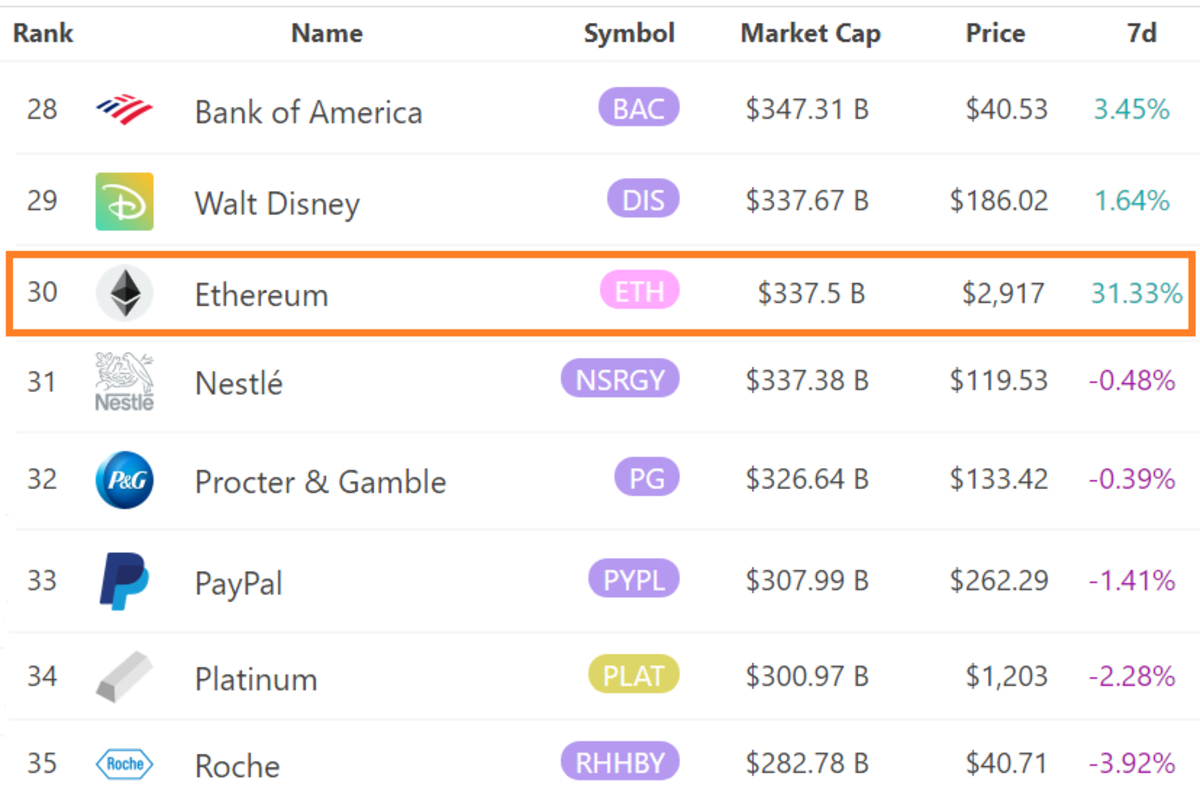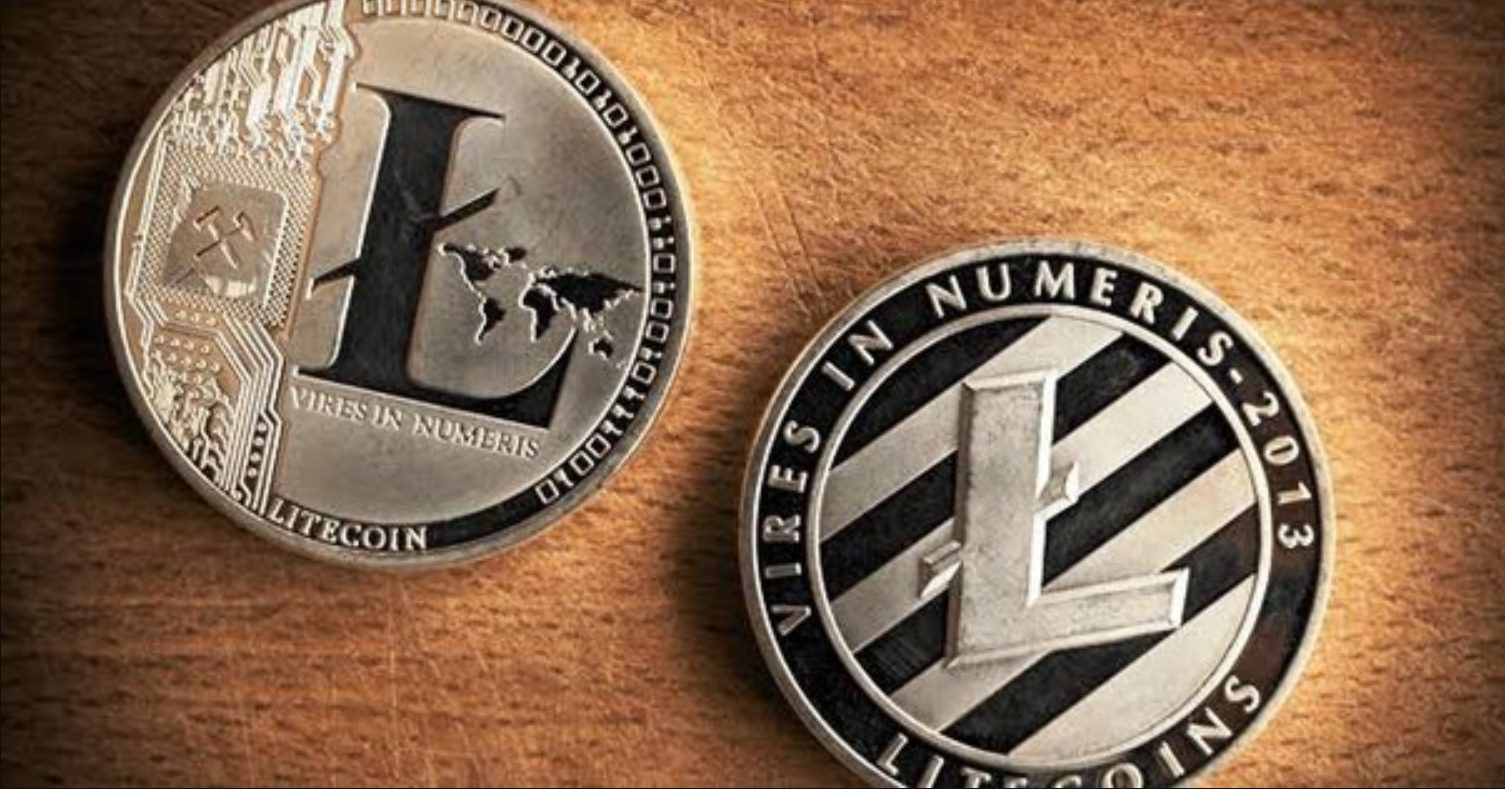Introduction
Welcome to the exciting world of cryptocurrency, where digital currencies have revolutionized the way we perceive and transact money. Amongst the numerous cryptocurrencies that have emerged, Bitcoin reigns as the dominant player, capturing the attention of investors, traders, and the general public alike. But have you ever wondered about the concept of Bitcoin market cap and its significance in the crypto space?
Bitcoin, created by the enigmatic Satoshi Nakamoto in 2009, is the first decentralized digital currency. It operates on a technology called blockchain, which allows for secure and transparent transactions without the need for intermediaries like banks or governments. As Bitcoin gained traction and its value soared to unprecedented heights, the concept of market cap entered the scene.
Market cap, short for market capitalization, is a measure of how much a company or asset is worth in the market. In the case of Bitcoin, market cap refers to the total value of all Bitcoins in circulation. It is calculated by multiplying the current price of one Bitcoin by the total number of Bitcoins in existence.
The market cap of Bitcoin is a key indicator of its overall value and popularity within the cryptocurrency ecosystem. It provides insight into the size and significance of Bitcoin in comparison to other digital currencies. As the pioneer of cryptocurrencies, Bitcoin has a substantial market cap that exceeds that of most other cryptocurrencies combined.
The importance of Bitcoin market cap stems from its influence on investors and traders. A higher market cap often indicates a higher level of trust and confidence in the digital asset. It can attract institutional investors and open up additional opportunities for adoption and mainstream acceptance.
Various factors affect Bitcoin market cap, including demand, supply, price volatility, technological advancements, regulatory developments, and market sentiment. These factors contribute to the unpredictable nature of the cryptocurrency market and can lead to significant fluctuations in market cap.
Calculating Bitcoin market cap is a relatively straightforward process. It involves multiplying the current price of Bitcoin by the total number of coins in circulation. However, it is crucial to note that the accuracy of the market cap calculations relies on reliable data sources and real-time market prices.
Comparing Bitcoin’s market cap with other cryptocurrencies offers valuable insights into the relative strength and dominance of Bitcoin in the crypto market. Despite the emergence of numerous alternative cryptocurrencies, commonly referred to as altcoins, Bitcoin maintains its position as the front runner with the highest market cap.
The future of Bitcoin market cap is an intriguing subject. As the cryptocurrency market continues to evolve and mature, Bitcoin’s market cap is expected to face competition from other digital currencies. However, its first-mover advantage, strong brand recognition, and widespread adoption give it a solid foundation to maintain its position as the market leader.
Understanding Bitcoin market cap is essential for both seasoned cryptocurrency enthusiasts and newcomers to the digital asset space. It provides valuable insights into the growth, performance, and overall significance of Bitcoin in the ever-evolving world of cryptocurrencies.
What is Market Cap?
Market capitalization, or market cap, is a financial metric used to determine the value and size of a company or asset in the market. It is calculated by multiplying the current price of a single unit (such as a share of stock or a digital currency) by the total number of units in circulation. Market cap provides investors and analysts with a measure of the worth and significance of an asset within its respective market.
Market cap is commonly used in the stock market to assess the value of publicly traded companies. It helps investors gauge the relative size and importance of a company compared to its peers. For example, a company with a market cap of $1 billion is generally considered smaller than a company with a market cap of $10 billion.
Market cap is not limited to traditional stocks; it is also applicable to the world of cryptocurrencies. In the crypto market, market cap serves as an important indicator of a digital currency’s popularity and influence. It provides insights into the relative strength and dominance of a cryptocurrency compared to others.
There are different categories or classifications of market cap, which include the following:
- Large-cap: Refers to assets with a high market cap, typically exceeding billions of dollars. These are often established and well-known entities in their respective industries.
- Mid-cap: Represents assets with a moderate market cap, typically ranging from a few hundred million to a few billion dollars. These companies often have the potential for growth and expansion.
- Small-cap: Refers to assets with a relatively low market cap, usually below a billion dollars. These companies are often younger and have the potential for higher volatility and growth.
Market cap is an important metric because it provides a snapshot of an asset’s value in relation to others. It can influence investment decisions, as investors may choose to allocate their funds based on the size and potential of a given asset. Large-cap assets are often considered more stable and less risky, while small-cap assets may offer higher growth potential but come with increased volatility.
It is important to note that market cap is not the same as the total value of an asset. Market cap represents the value of the publicly available units, while the total value may include additional units held by insiders or restricted from trading.
Finally, it is worth mentioning that market cap is not a foolproof metric. It is based on the current market price, which can fluctuate greatly over time. Market cap alone does not provide a complete assessment of an asset’s overall performance or future prospects. Hence, it should be used in conjunction with other fundamental and technical analysis tools to make informed investment decisions.
Understanding Bitcoin
Bitcoin is a decentralized digital currency that was introduced in 2009 by an anonymous individual or group using the pseudonym Satoshi Nakamoto. It is the first and most well-known cryptocurrency, operating on a technology called blockchain.
Unlike traditional currencies issued and controlled by central banks, Bitcoin is not backed by any government or financial institution. Instead, it relies on a distributed network of computers, known as nodes, that verify and record transactions on the blockchain.
Bitcoin transactions are secured through cryptographic algorithms and are stored on a public ledger, ensuring transparency and immutability. This decentralized nature and cryptographic security make Bitcoin resistant to censorship, fraud, and tampering, making it an attractive option for those seeking financial autonomy and privacy.
One of the key features of Bitcoin is its limited supply. There will only ever be 21 million Bitcoins in existence, and this scarcity is designed to ensure its value over time. As of now, more than 18.5 million Bitcoins have been mined, leaving a finite number left to be discovered through a process called mining.
Bitcoin mining involves solving complex mathematical problems to validate and add new transactions to the blockchain. Miners compete against each other to find the solution, and the first one to solve the problem is rewarded with newly minted Bitcoins as well as transaction fees.
The value of Bitcoin is determined by supply and demand dynamics, similar to traditional markets. Its price can be highly volatile, experiencing significant fluctuations within short periods. Factors such as market sentiment, regulatory developments, technological advancements, and macroeconomic events can all influence the price of Bitcoin.
Bitcoin offers several advantages over traditional banking and financial systems. Transactions can be conducted peer-to-peer without the need for intermediaries, such as banks or payment processors. This eliminates costly fees and delays associated with traditional banking systems, making Bitcoin a faster and more cost-effective method of transferring value globally.
Another aspect that sets Bitcoin apart is its potential as a store of value. Many proponents argue that Bitcoin can serve as a hedge against inflation and a reliable long-term investment. Its limited supply and decentralized nature make it resistant to the monetary policies of central banks and government interventions.
Bitcoin has gained significant mainstream acceptance since its inception, with numerous merchants and businesses now accepting it as a form of payment. Additionally, institutional investors and large companies have started to allocate a portion of their portfolios to Bitcoin, further solidifying its position as a legitimate asset class.
Understanding the fundamentals and principles of Bitcoin is crucial for anyone looking to enter the world of cryptocurrencies. While its volatility and the complexities of the technology may pose challenges, the potential benefits and disruptive nature of Bitcoin make it an exciting and revolutionary concept in the realm of finance.
What is Bitcoin Market Cap?
Bitcoin market cap refers to the total value of all Bitcoins in circulation at a given point in time. It is a measure of the size and significance of Bitcoin within the cryptocurrency market. Market cap is calculated by multiplying the current price of one Bitcoin by the total number of Bitcoins in existence.
Bitcoin’s market cap showcases its total market value, taking into account both the price per Bitcoin and the overall supply. The larger the market cap, the more valuable Bitcoin is considered in comparison to other cryptocurrencies. As the first and most well-known cryptocurrency, Bitcoin’s market cap is often used as a yardstick to assess the health and overall performance of the broader cryptocurrency market.
The significance of Bitcoin market cap lies in its ability to provide insights into the strength and dominance of Bitcoin in the crypto space. A higher market cap suggests a wider adoption and a stronger belief in the potential of Bitcoin as a store of value or medium of exchange. The market cap also serves as an indicator of market sentiment and investor confidence in the digital currency.
It is important to note that Bitcoin market cap is influenced by various factors, including price volatility, investor demand, mining rewards, regulatory developments, technological advancements, and overall market conditions. These factors can cause substantial fluctuations in market cap, making it a dynamic and ever-changing metric.
Bitcoin’s market cap has witnessed significant growth since its inception, reflecting the increasing popularity and acceptance of the cryptocurrency. Despite occasional downturns and fluctuations, its market cap has consistently been one of the highest in the cryptocurrency market, reflecting the strong position of Bitcoin in the industry.
However, it is important to understand that market cap alone does not provide a complete picture of an asset’s value or performance. It should be considered alongside other factors such as trading volume, liquidity, and market sentiment to gain a comprehensive assessment of Bitcoin’s market position.
Comparing Bitcoin’s market cap with other cryptocurrencies can provide valuable insights into the relative size and importance of different digital assets. Bitcoin has historically maintained a substantial market cap lead over other cryptocurrencies, often dwarfing the market caps of its closest competitors.
In summary, Bitcoin market cap represents the total value of all Bitcoins in circulation, providing insights into the relative strength and dominance of Bitcoin in the cryptocurrency market. It is a dynamic and crucial metric, influenced by various factors that shape the overall crypto landscape.
Importance of Bitcoin Market Cap
The market cap of Bitcoin holds significant importance in the world of cryptocurrencies, serving as a key indicator of Bitcoin’s value, adoption, and relevance in the market. Here are several reasons why Bitcoin market cap is of great importance:
1. Measure of Popularity and Dominance: Bitcoin market cap provides insights into the popularity and dominance of Bitcoin within the cryptocurrency ecosystem. A higher market cap signifies a greater level of trust, adoption, and recognition among investors and users. It solidifies Bitcoin’s position as the leader and standard-bearer of the cryptocurrency market.
2. Investor Confidence: The market cap of Bitcoin is closely monitored by investors and traders as an indication of investor confidence. A higher market cap implies stronger trust and belief in the potential value of Bitcoin as an investment asset. Institutional investors often consider Bitcoin’s market cap when evaluating the viability of including it in their portfolios.
3. Attraction for Institutional Investors: Bitcoin’s large market cap makes it an attractive option for institutional investors seeking exposure to the cryptocurrency market. Institutions often have strict investment criteria and prefer assets with significant market cap to ensure liquidity, stability, and a certain level of maturity in the market.
4. Mainstream Adoption: Bitcoin’s market cap plays a role in driving mainstream adoption. As the market cap grows, it attracts more attention from businesses, merchants, and individuals, who are more likely to consider accepting Bitcoin as a form of payment or investment. This increased adoption can further fuel the growth in market cap as more people transact and hold Bitcoin.
5. Indicator of Market Trends: Bitcoin’s market cap is a valuable metric for assessing market trends and sentiments. Increases or decreases in market cap can provide insights into the overall health of the cryptocurrency market. It can indicate bullish or bearish market conditions, affecting the confidence and trading activities of investors.
6. Benchmark for Comparison: Bitcoin’s market cap serves as a benchmark for comparing the value and significance of other cryptocurrencies. By comparing the market caps of different cryptocurrencies, investors can identify the relative strength and potential of each digital asset and make informed investment decisions.
7. Influence on Market Behavior: Market cap can influence the behavior of market participants, including traders, investors, and developers. A higher market cap can attract more developers to build applications and services around Bitcoin, further boosting its adoption and utility, which in turn can contribute to an increase in market cap.
Overall, Bitcoin market cap plays a crucial role in shaping the perception, adoption, and investment decisions within the cryptocurrency market. It provides a measure of Bitcoin’s popularity, dominance, and potential, making it a vital metric for investors, traders, and enthusiasts alike.
Factors Affecting Bitcoin Market Cap
Bitcoin market cap, like any other cryptocurrency, is not static and can be influenced by various factors. Understanding these factors is essential for evaluating the growth and sustainability of Bitcoin’s market cap. Here are some key factors that can affect Bitcoin’s market cap:
1. Demand and Investor Sentiment: Demand for Bitcoin plays a significant role in determining its market cap. When there is high demand for Bitcoin, driven by factors such as increased adoption, positive news, or investor speculation, the market cap tends to rise. Conversely, if demand dwindles, it can lead to a decrease in market cap.
2. Supply and Halving Events: Bitcoin operates on a fixed supply schedule, where the number of new Bitcoins created through mining is halved approximately every four years. This scarcity can have a positive impact on Bitcoin’s market cap by creating an environment of limited supply in the face of increasing demand. The most recent halving event occurred in May 2020, which reduced the rate of new Bitcoin creation, potentially affecting market cap in the long run.
3. Price Volatility: Bitcoin is known for its price volatility, with significant price fluctuations occurring over short periods. Sudden price movements can affect market cap as they impact the valuation of existing Bitcoin holdings. High levels of volatility may attract or deter potential investors and traders, influencing the overall demand and market cap of Bitcoin.
4. Regulatory Environment: Regulatory developments and government policies around cryptocurrencies can have a substantial impact on Bitcoin’s market cap. Positive regulatory measures, such as regulatory clarity or favorable legal frameworks, can boost investor confidence and attract institutional participation, potentially increasing market cap. Conversely, negative regulatory actions or uncertainty can lead to a decline in market cap.
5. Technological Advancements: The technological advancements within the Bitcoin ecosystem can influence market cap as well. Improvements in scalability, transaction speed, and privacy features can enhance the utility and attractiveness of Bitcoin, leading to increased adoption and potential growth in market cap. Upgrades or developments in the underlying blockchain technology can also have a positive impact on market sentiment and investor confidence.
6. Macro-economic Factors: Broader economic conditions, such as inflation, global economic crises, or geopolitical events, can indirectly affect Bitcoin’s market cap. Bitcoin is often regarded as a hedge against economic uncertainties, and in times of economic instability, investors may seek a safe haven in cryptocurrencies, potentially driving up demand and market cap.
7. Market Competition: The cryptocurrency market is highly competitive, with numerous alternative digital assets (altcoins) vying for attention and investment. As new cryptocurrencies emerge and gain traction, they may pose competition to Bitcoin’s market cap. Bitcoin’s ability to maintain its dominance and market leadership amidst this competition will impact its future market cap.
It is important to note that these factors are interconnected, and an interplay of multiple factors can shape the market cap of Bitcoin. Additionally, unexpected events or black swan events can significantly impact market cap in unforeseen ways. Therefore, staying informed about these factors and their potential impact is crucial for those interested in Bitcoin and the cryptocurrency market as a whole.
How is Bitcoin Market Cap Calculated?
The calculation of Bitcoin market cap is relatively straightforward and involves multiplying the current price per Bitcoin by the total number of Bitcoins in circulation. Here’s a step-by-step process of how Bitcoin market cap is calculated:
Step 1: Determine the Current Price
The first step in calculating Bitcoin market cap is to determine the current price of Bitcoin. The price can be obtained from cryptocurrency exchanges or financial data providers, which track the trading activity and prices of various cryptocurrency assets.
Step 2: Find the Total Number of Bitcoins in Circulation
The next step is to find the total number of Bitcoins in circulation. This information is publicly available and can usually be found on blockchain explorers or cryptocurrency websites. It is important to note that the exact number of Bitcoins in circulation may change slightly over time due to factors such as lost or destroyed Bitcoins.
Step 3: Multiply the Price by the Total Number of Bitcoins
Once the current price of Bitcoin and the total number of Bitcoins in circulation are determined, the next step is to multiply these two values. This multiplication effectively calculates the market cap by representing the total value of all the Bitcoins in circulation.
For example, if the current price of Bitcoin is $50,000 and there are 18.5 million Bitcoins in circulation, the market cap would be calculated as follows:
Market Cap = Current Price x Total Number of Bitcoins
= $50,000 x 18.5 million
= $925 billion
Therefore, in this example, the market cap of Bitcoin would be $925 billion.
It is worth noting that market cap calculations may differ slightly depending on the source due to variations in price data and the method used to determine the total number of Bitcoins in circulation. Additionally, the accuracy of market cap calculations relies on reliable and up-to-date data sources.
Bitcoin market cap offers investors and enthusiasts valuable insights into the overall value and significance of Bitcoin within the cryptocurrency market. It serves as an important metric in assessing investor sentiment, demand, and Bitcoin’s position compared to other digital assets in the market.
Comparison of Bitcoin Market Cap with Other Cryptocurrencies
Bitcoin, as the pioneer of cryptocurrencies, has consistently maintained the highest market cap amongst all digital assets. However, the cryptocurrency market is dynamic, and numerous alternative cryptocurrencies, commonly known as altcoins, have emerged over the years. Here, we explore the comparison of Bitcoin’s market cap with other cryptocurrencies:
Bitcoin’s market cap dominance is evident when comparing it to individual altcoins. Bitcoin’s market cap is often significantly larger than that of any single altcoin, demonstrating its long-standing position as the market leader. It has established a strong brand presence and has become synonymous with the term “cryptocurrency” itself.
However, there are instances where select altcoins have achieved comparative success in terms of market cap. Ethereum, for example, is one of the most notable altcoins and has periodically held the second-largest market cap position. Ethereum’s market cap is driven by its extensive smart contract functionalities and decentralized applications (DApps) built on its blockchain platform.
Additionally, other altcoins such as Ripple (XRP), Binance Coin (BNB), Cardano (ADA), and Litecoin (LTC) have also achieved significant market caps and garnered attention within the cryptocurrency community.
It is worth noting that altcoins often specialize in specific use cases or niche areas of the cryptocurrency ecosystem. Some focus on providing faster transaction speeds, improved privacy, or unique features tailored to specific industries or user needs. These differentiating factors can influence the market caps of altcoins.
When comparing Bitcoin’s market cap to the combined market cap of all altcoins, Bitcoin’s dominance is even more evident. While individual altcoins may have respectable market caps, the sum of their market caps is typically smaller than Bitcoin’s. Bitcoin’s combined market cap dominance speaks to its long-standing market presence and the overall trust and value placed in it by the cryptocurrency community.
Bitcoin’s market cap advantage can be attributed to several factors, including its first-mover advantage, brand recognition, network effect, and widespread adoption among investors, traders, and merchants.
Despite the emergence and potential success of altcoins, Bitcoin continues to set the pace and dictate market trends for the broader cryptocurrency industry. Its market cap dominance underscores the fact that Bitcoin remains the most recognized and widely adopted digital asset, solidifying its position as the benchmark for other cryptocurrencies.
However, it is important to recognize that the cryptocurrency market is highly volatile and subject to rapid changes. Altcoins may experience significant surges in market cap or even potential challenges to Bitcoin’s dominance as the market evolves and new innovations arise.
As the cryptocurrency market matures, the comparison of Bitcoin’s market cap with other cryptocurrencies will continue to be an important metric in assessing the performance and relevance of various digital assets. Analyzing these market cap comparisons provides valuable insights into the competitive landscape and the overall market sentiment within the cryptocurrency industry.
The Future of Bitcoin Market Cap
The future of Bitcoin market cap holds both excitement and uncertainty as the cryptocurrency industry continues to evolve. Here are several factors that could potentially shape the future of Bitcoin’s market cap:
1. Institutional Adoption: The increasing interest and acceptance of Bitcoin by institutional investors and corporations could have a significant impact on its market cap. As more institutions allocate funds to Bitcoin, it not only increases demand but also provides a stamp of legitimacy, potentially attracting more mainstream investors and driving market cap growth.
2. Regulatory Developments: Clearer regulatory frameworks and greater regulatory acceptance can positively influence Bitcoin’s market cap. As governments and regulatory bodies establish guidelines and regulations for the cryptocurrency industry, it instills confidence in investors and reduces the perceived risks associated with Bitcoin. This increased regulatory certainty can drive institutional adoption and contribute to the growth of Bitcoin’s market cap.
3. Technological Advancements: Ongoing technological advancements within the Bitcoin ecosystem, such as improvements in scalability, privacy, and user experience, can enhance Bitcoin’s utility and attractiveness. These advancements may attract more users and businesses to adopt Bitcoin, potentially leading to increased demand and market cap expansion.
4. Economic Conditions: Economic factors, such as inflation, economic crises, or currency devaluations, can influence the future of Bitcoin’s market cap. As an alternative asset class, Bitcoin may attract investors seeking a hedge against traditional financial instability or as a store of value in times of economic uncertainty. These macroeconomic conditions can impact investor sentiment and drive market cap growth.
5. Competition from Altcoins: The emergence of innovative altcoins with unique features and functionalities may pose competitive challenges to Bitcoin’s market cap. As altcoins gain popularity and adoption, they may attract a portion of the market cap away from Bitcoin, potentially impacting its dominance. However, Bitcoin’s first-mover advantage, established brand recognition, and widespread adoption provide a strong foundation for maintaining its position in the market.
6. Global Adoption: Bitcoin’s market cap may also be influenced by its level of global adoption. As more countries and regions embrace Bitcoin as a legitimate form of payment and investment, it can drive increased demand and market cap growth. Expanding access to Bitcoin through financial infrastructures, payment gateways, and user-friendly applications can contribute to broader adoption and higher market cap levels.
7. Investor Sentiment: The sentiment of investors, both retail and institutional, plays a crucial role in shaping Bitcoin’s market cap. Positive sentiment, driven by favorable news, market confidence, or positive performance, can attract new investors and drive market cap growth. Conversely, negative sentiment or market downturns may lead to a decrease in market cap.
The future of Bitcoin market cap is interconnected with advancements in technology, regulatory developments, macroeconomic factors, and overall market sentiment. While Bitcoin’s market cap has experienced significant growth over the years, it is important to recognize that the cryptocurrency market is highly volatile and subject to rapid changes.
As the cryptocurrency industry matures and the global understanding and acceptance of Bitcoin expands, the future of Bitcoin’s market cap will likely be influenced by a combination of these factors. Monitoring these developments can provide valuable insights into the growth and trajectory of Bitcoin’s market cap in the years to come.
Conclusion
The market cap of Bitcoin is a key indicator of its value, popularity, and dominance within the cryptocurrency market. As the first and most well-known cryptocurrency, Bitcoin has established itself as a leader and benchmark for other digital assets. Its market cap reflects the trust and confidence placed in Bitcoin by investors, institutions, and the broader cryptocurrency community.
Understanding and analyzing Bitcoin’s market cap is crucial for investors, traders, and enthusiasts. It provides valuable insights into Bitcoin’s performance, relative strength, and overall significance within the evolving crypto landscape.
Factors such as demand, supply, price volatility, regulatory developments, technological advancements, and market sentiment influence Bitcoin’s market cap. These factors contribute to the dynamic nature of the cryptocurrency market and can lead to significant fluctuations in market cap over time.
Bitcoin’s market cap has consistently exceeded that of most other cryptocurrencies combined, demonstrating its position as the dominant player in the industry. However, alternative cryptocurrencies, or altcoins, have also gained traction and occasionally achieved substantial market cap levels.
The future of Bitcoin’s market cap is influenced by various factors, including institutional adoption, regulatory developments, technological advancements, global adoption, competition from altcoins, and investor sentiment. Monitoring these factors can provide valuable insights into Bitcoin’s growth potential and market position.
As the cryptocurrency market continues to evolve, it is important to remain vigilant and stay informed about the latest trends and developments. This knowledge can help navigate the dynamic landscape and make informed decisions regarding Bitcoin and other digital assets.
In conclusion, Bitcoin market cap reflects the value and significance of Bitcoin within the cryptocurrency market. Its measurement serves as a yardstick for Bitcoin’s performance, adoption, and dominance. By understanding the factors that influence Bitcoin’s market cap, investors and enthusiasts can gain valuable insights into the future growth and trajectory of this pioneering digital asset.

























